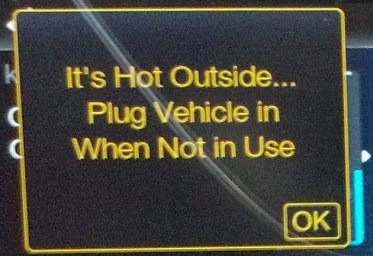studio460
Well-known member
[Daily commute: 60 miles round-trip (South Bay to Burbank, CA).]
[Home: Level 2 (planned); work: standard, 120V outlets only.]
[Road type: 100% freeway with a single large incline/decline (Sepulveda pass/Cahuenga pass)].
[Freeways used: Work-bound: 105E/405N/101S/134E; home-bound: 134E/5S/110S/105W/405S)].
[HOV: Available on 90% of freeway commute (Including FasTrak lanes).]
Thanks a lot, v_traveller, for that detailed, and specific reply! It's really great to hear from another person who knows the Los Angeles-area freeway system. I didn't realize the Sepulveda pass was 400' in elevation (I'll be taking my Garmin Oregon 600 GPS device on my way to work tomorrow).
HOV speeds:
In addition to my HOV sticker, I'll be getting a FasTrak transponder when I get my FFE, which brings up another issue. I would be fine driving at optimal electric speeds on the freeway, but as I'm sure you know, if I drove 55MPH in the 405 HOV lane, I would end up pissing off the entire city (that said, often the 405's HOV lane is slower than the regular lanes). From your reply, I take it that you drive 70MPH+ when using an HOV lane just for that reason. I sometimes take a different route home, since the Westside will still be congested, while the 110S/105W is less heavy toward the latter part of rush hour. At least there are two HOV lanes on the 110. But, since I mainly take the 405, I'm not sure my 60-mile RT commute could be completed on a single-charge at those speeds. What do you think?
Keeping batteries in-check on hot San Fernando Valley parking lots:
I also read your blog (which is excellent, by the way), and found out about the hot-asphalt issue. At home, I live near the beach, and would be parking my FFE on a white, concrete driveway. But at work, I park on a hot, black-asphalt lot. My schedule varies every day, so I could arrive at anytime between 7AM and 4PM, depending on what I'm assigned, so I'm more likely to park on an already-heated space than not. I'll typically be able to park near any one of two 120V-adjacent parking spots (but not necessarily guaranteed 100% of the time), so it looks like I may be able to keep my Lithium temps in check during those hot days of summer in the valley. This seems critical, since I know from using Lithium batteries for video applications, they're very sensitive to temperature. Thanks for all your advice!
[Home: Level 2 (planned); work: standard, 120V outlets only.]
[Road type: 100% freeway with a single large incline/decline (Sepulveda pass/Cahuenga pass)].
[Freeways used: Work-bound: 105E/405N/101S/134E; home-bound: 134E/5S/110S/105W/405S)].
[HOV: Available on 90% of freeway commute (Including FasTrak lanes).]
60-mile, round-trip freeway commute:v_traveller said:Your round trip commute between South Bay and Burbank should be easily done on one charge at home, if you have a Level 2 EVSE. Using the Level 1 that comes with the car could do the trick as long as you are able to plug in maybe 14 hours before you leave in the morning.studio460 said:By the way, do you charge while at work on your 60-mile commute? Or is a 60-mile round-trip commute totally doable from your home-charge?
I commute ~80 miles RT, Santa Clarita to El Segundo. Can't make it on one charge using the carpool lane (70+mph) due to the 1200ft elevation difference between the two points and having to get over the Sepulveda pass... would need about 2kWh more energy to do so. Your shorter distance and smaller difference in elevation gain/loss (about 400 ft) makes your situation much more doable on one charge.
Thanks a lot, v_traveller, for that detailed, and specific reply! It's really great to hear from another person who knows the Los Angeles-area freeway system. I didn't realize the Sepulveda pass was 400' in elevation (I'll be taking my Garmin Oregon 600 GPS device on my way to work tomorrow).
HOV speeds:
In addition to my HOV sticker, I'll be getting a FasTrak transponder when I get my FFE, which brings up another issue. I would be fine driving at optimal electric speeds on the freeway, but as I'm sure you know, if I drove 55MPH in the 405 HOV lane, I would end up pissing off the entire city (that said, often the 405's HOV lane is slower than the regular lanes). From your reply, I take it that you drive 70MPH+ when using an HOV lane just for that reason. I sometimes take a different route home, since the Westside will still be congested, while the 110S/105W is less heavy toward the latter part of rush hour. At least there are two HOV lanes on the 110. But, since I mainly take the 405, I'm not sure my 60-mile RT commute could be completed on a single-charge at those speeds. What do you think?
Keeping batteries in-check on hot San Fernando Valley parking lots:
I also read your blog (which is excellent, by the way), and found out about the hot-asphalt issue. At home, I live near the beach, and would be parking my FFE on a white, concrete driveway. But at work, I park on a hot, black-asphalt lot. My schedule varies every day, so I could arrive at anytime between 7AM and 4PM, depending on what I'm assigned, so I'm more likely to park on an already-heated space than not. I'll typically be able to park near any one of two 120V-adjacent parking spots (but not necessarily guaranteed 100% of the time), so it looks like I may be able to keep my Lithium temps in check during those hot days of summer in the valley. This seems critical, since I know from using Lithium batteries for video applications, they're very sensitive to temperature. Thanks for all your advice!




































